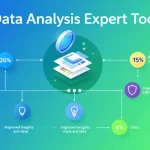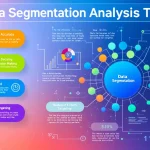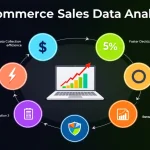Customer Segmentation Analysis
Is this tool helpful?
How to Use the Customer Segmentation Analysis Tool Effectively
To get useful insights from the Customer Segmentation Analysis Tool, follow these steps to prepare and submit your input:
-
Enter Customer Data: Provide detailed customer information relevant to your business. Use comma-separated values that capture important attributes, such as:
- Example 1: Customer ID, Age, Gender, City, Last Purchase Date, Total Spend, Preferred Payment Method
- Example 2: UserID, Subscription Level, Login Frequency, Support Tickets Raised, Feedback Score, Referral Source
-
Set Segmentation Goals: Specify what you want to achieve with segmentation. This guides the analysis to focus on your priorities, such as:
- Enhance customer loyalty programs and increase repeat purchases
- Identify high churn risk groups and improve retention strategies
-
List Key Metrics (Optional): Highlight important metrics to emphasize in the segmentation. Examples include:
- Average Session Duration, Conversion Rate, Customer Acquisition Cost
- Customer Satisfaction Score, Monthly Recurring Revenue, Engagement Rate
-
Provide Industry Context (Optional): Offer background about your market or sector to tailor the analysis. For instance:
- Online fitness coaching platform targeting millennials
- Wholesale supplier serving independent electronics retailers
- Analyze Customer Data: Click the “Analyze Customer Data” button to process your inputs and generate segmentation insights.
- Review the Results: Examine the generated segments and recommendations shown in the analysis section.
- Copy or Save Findings: Use the provided copy functionality to keep or share your customer segmentation results easily.
What Is Customer Segmentation Analysis? Definition, Purpose, and Benefits
Customer segmentation analysis divides a broad customer base into specific groups based on shared features like demographics, behavior, and preferences. This approach helps you understand customers better and target them more effectively.
Purpose of Customer Segmentation Analysis
- Deliver personalized marketing messages to distinct customer groups
- Create products or services that align with customer needs
- Use marketing budgets efficiently by focusing on promising segments
- Boost customer loyalty and satisfaction through tailored experiences
- Discover untapped market opportunities
Key Benefits of Customer Segmentation
- Targeted Marketing: Reach customers with messaging that truly fits their interests and behaviors.
- Better Customer Experiences: Adapt products and services to meet the diverse preferences of your customers.
- Higher Retention Rates: Address specific pain points or desires to keep customers coming back.
- Improved Product Development: Use segment-focused insights to innovate effectively.
- Efficient Resource Use: Concentrate efforts on segments with the highest growth potential.
- Competitive Edge: Identify niche segments your competitors may overlook.
- Enhanced Customer Acquisition: Target prospects resembling your best customers.
Practical Uses of the Customer Segmentation Analysis Tool
This tool helps you analyze your customer data quickly to find meaningful segments that improve your strategies. Here’s how businesses in various industries apply it:
E-commerce Example
- Input: Data like Customer ID, Age, Purchase Frequency, Average Cart Value, Preferred Brands, and Website Browsing Behavior.
- Goal: Increase conversion rates by personalizing product recommendations.
- Key Metrics: Shopping cart abandonment rate, average time on site, repeat purchase rate.
- Industry Context: Specialized online store for home gardening products.
The tool identifies customer groups such as “Frequent Shoppers,” “Bargain Seekers,” and “Seasonal Buyers,” helping you tailor marketing campaigns and optimize inventory.
B2B Service Provider Example
- Input: Company size, purchasing cycle length, contract value, support requests, product usage rates.
- Goal: Reduce churn by spotting early warning signs in customer behaviors.
- Key Metrics: Customer health score, net promoter score, ticket resolution time.
- Industry Context: SaaS firm providing collaboration tools to mid-sized companies.
The tool segments clients into groups like “Power Users,” “At-risk Accounts,” and “New Customers,” which guides targeted retention and upsell campaigns.
Subscription Service Example
- Input: Subscriber age, plan type, usage frequency, engagement metrics, social sharing activity.
- Goal: Increase premium plan upgrades and reduce cancellations.
- Key Metrics: Churn rate, upgrade conversion rate, average monthly usage.
- Industry Context: Online video streaming platform with a freemium model.
The tool reveals segments like “Heavy Streamers,” “Casual Viewers,” and “Lapsed Subscribers,” enabling personalized promotions and engagement strategies.
How This Customer Segmentation Analysis Tool Supports Your Business
1. Organizes and Structures Customer Data
You can submit varied customer data types — demographic, transactional, behavioral — and the tool structures it for clearer pattern identification.
2. Focuses Analysis on Your Goals
By defining specific segmentation objectives, the tool customizes its analysis to produce results aligned with what matters most to your business.
3. Prioritizes Important Metrics
You control which key performance indicators and metrics to highlight, ensuring that segmentation reflects your unique business drivers.
4. Considers Industry-Specific Factors
Inputting your market or sector details lets the tool tailor its recommendations based on industry trends and challenges.
5. Automates Complex Segmentation Tasks
The tool speeds up the analysis process by handling complex calculations and grouping tasks, freeing you to focus on applying insights.
6. Delivers Clear, Actionable Insights
Results are easy to read and understand, helping you develop concrete marketing strategies and decisions based on segmentation findings.
Benefits of Using the Customer Segmentation Analysis Tool
Efficient Use of Your Time and Resources
The tool eliminates manual data sorting and analysis, allowing you to quickly access meaningful customer segments without extra effort.
Improved Decision-Making Backed by Data
You get objective, data-driven insights that reduce guesswork and support smarter marketing and business choices.
Scalable Across Business Sizes
From startups to large enterprises, the tool accommodates varying data volumes and grows with your customer base.
Flexible and Customizable Inputs
You tailor the analysis with segmentation goals, key metrics, and industry context, resulting in insights specific to your unique needs.
Important Disclaimer
The calculations, results, and content provided by our tools are not guaranteed to be accurate, complete, or reliable. Users are responsible for verifying and interpreting the results. Our content and tools may contain errors, biases, or inconsistencies. Do not enter personal data, sensitive information, or personally identifiable information in our web forms or tools. Such data entry violates our terms of service and may result in unauthorized disclosure to third parties. We reserve the right to save inputs and outputs from our tools for the purposes of error debugging, bias identification, and performance improvement. External companies providing AI models used in our tools may also save and process data in accordance with their own policies. By using our tools, you consent to this data collection and processing. We reserve the right to limit the usage of our tools based on current usability factors.







